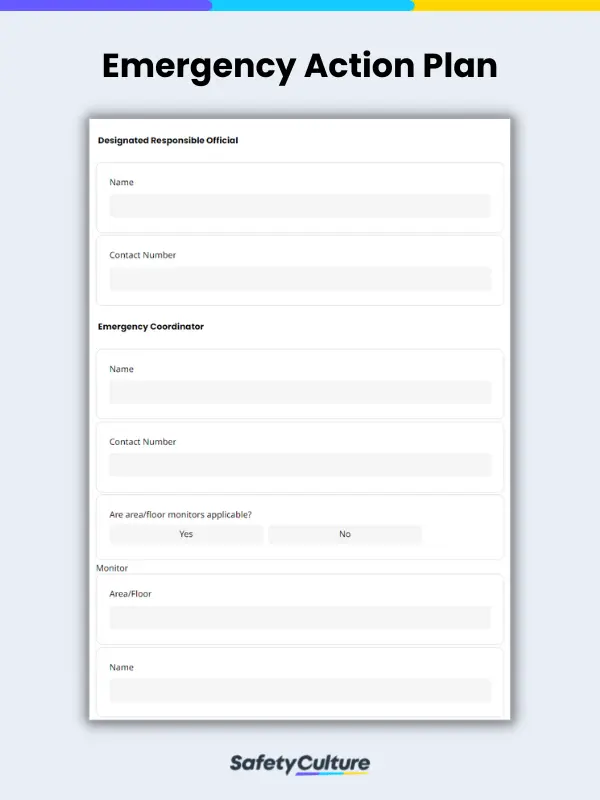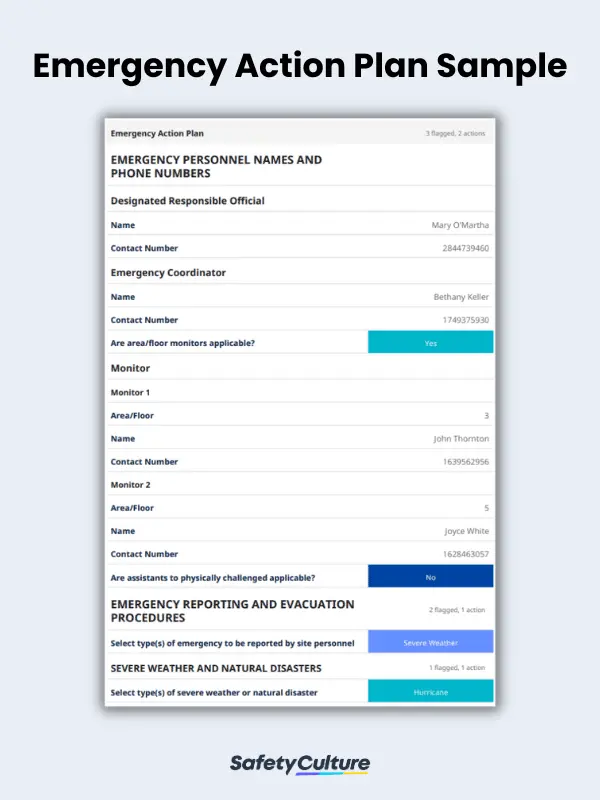What is an Emergency Action Plan Template?
An emergency action plan template is a digital tool used by safety and health managers of large enterprises or owners of small to medium businesses to record their guidelines for workplace emergencies. According to the federal regulations for occupational safety and health standards, here are the minimum elements of an emergency action plan:
Benefits of Templating Your EAP
A typical emergency action plan, as per the federal regulations for occupational safety and health standards, should do the following:
- Prepare the procedures for reporting a fire or other emergency, as well as procedures for emergency evacuation, including type of evacuation and exit route assignments
- Communicate the procedures to be followed by employees who remain to operate critical plant operations before they evacuate
- Account for all employees before, during, and after evacuation
Depending on your organization or team, it can be difficult or tiresome to constantly create and fill up emergency action plans. Hence, the need for an emergency action plan template.
Templating your emergency action plan offers several benefits, such as the following:
- Ensuring consistency for creating emergency action plans to make it easier for everyone involved to understand and follow the plan, reducing confusion during an emergency
- Saving time in emergencies by providing a structured framework
- Complying with legal requirements and best practices regarding emergency plans and safety practices
What Should an EAP Template Include?
Emergency action plans can differ based on the industry and the specific business needs itself. These are, however, are the key components of an emergency action plan template:
- Individual roles and responsibilities
- Emergency communication procedures
- Emergency evacuations procedures
- Protection and safety equipment
- First Aid
- Emergency shutdown procedures
Here is an example of an emergency action plan template in use:
Most Common Uses for EAP Templates
Some of the most common emergencies where emergency action plan templates are useful include the following:
- Hurricanes
- Floods
- Earthquakes
- Acts of sudden violence
- Equipment malfunctions
- Extreme weather changes
- Fires
FAQs about EAP Templates
Emergency action plans cover all planned tasks and procedures in case of an unexpected event or emergency, including evacuations. An emergency evacuation plan is only focused on leaving the premises once emergency strikes.
Generally, it is all employers’ responsibility to create and manage an emergency action plan for their organization. However, in some cases, the employer designates specific representatives, managers, and leaders to create team-specific emergency action plans as well.
Ideally, emergency action plan templates should be reviewed yearly. However, in case of large-scale emergencies that alter organizational processes as a whole, it may be necessary to review your templates after each one to see if it is still working as intended.




